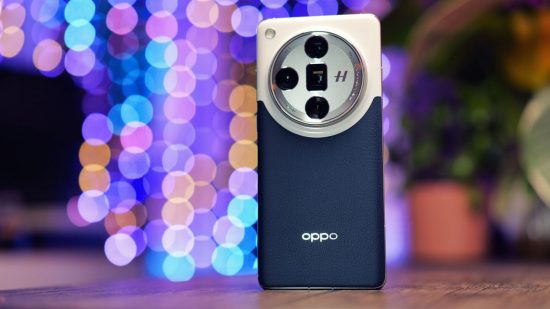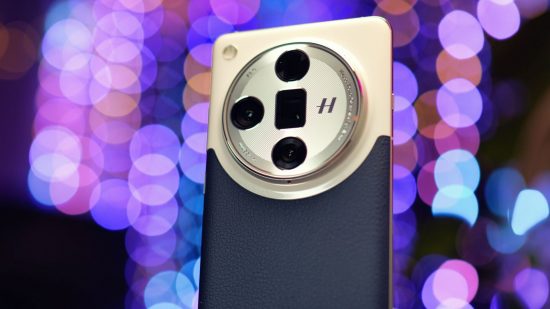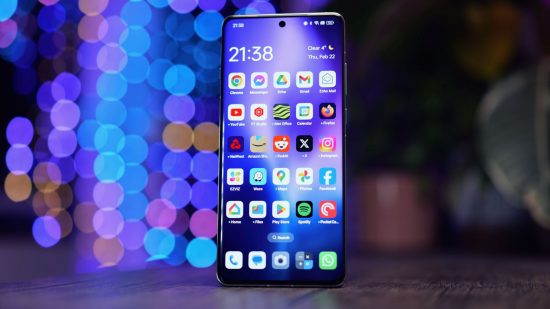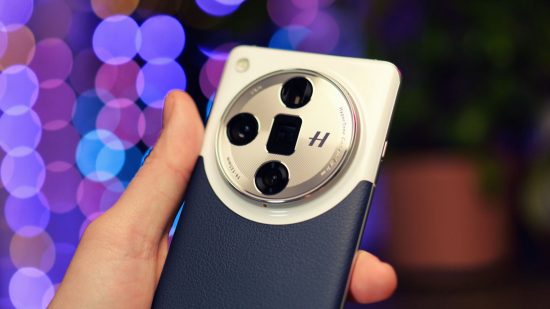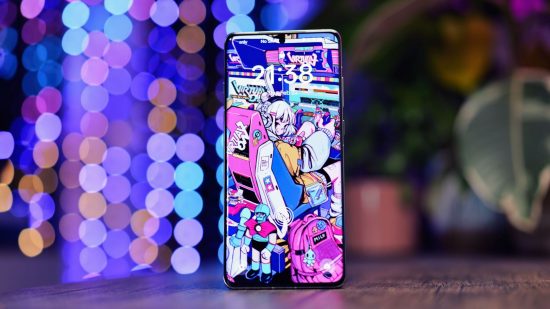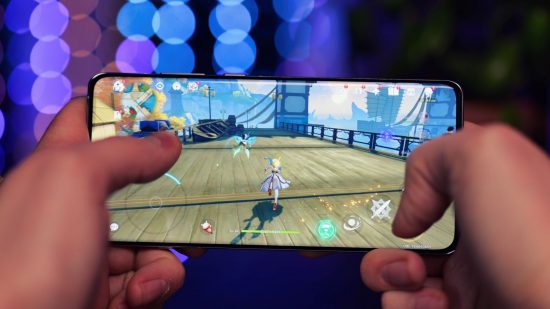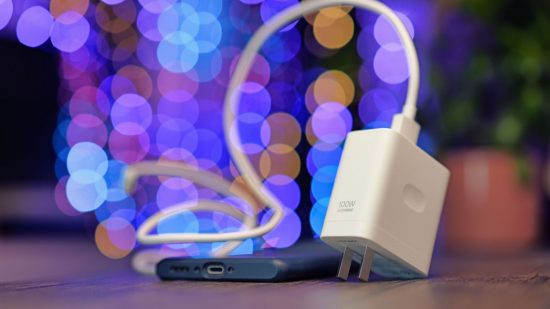Our Verdict
The Oppo Find X7 Ultra offers a true flagship experience. Everything is top-notch, from the design to the performance, and the cameras are on a whole other level. The problem is that Oppo hasn’t launched it outside of China, and it doesn’t seem like it ever will. If you choose to import one, the software experience is full of frustrations that most won’t be willing to deal with.
- Stunning photography
- Lovely design
- Plenty of power
- Speedy charging
- Only officially launched in China
- Some features are untranslated
- Too much bloatware
The Oppo Find X7 Ultra is Oppo’s top-of-the-line flagship smartphone for 2024. It looks to impress on all fronts, whether it’s the design, performance, or the formidable camera system. There’s a pretty big catch, though, and that’s the fact that it has only launched in China, and as far as we can tell, it looks like that’s where it’ll be staying.
It’s a real shame because this phone delivers in all areas. It has a gorgeous display, performance worthy of our best gaming phones list with its Snapdragon 8 Gen 3 processor, and the world’s first dual-periscope zoom camera array. Of course, those outside of China can still get their hands on it. It just means importing via one of the many Chinese resellers. However, doing so means you’ll be getting software that’s not fully localized, leading to some frustrations.
OnePlus is a subsidiary of Oppo, and if a OnePlus 12 Ultra existed, you can guarantee it’d look just like this. I was looking forward to finding out what this phone is capable of and if it could be worth the potential hassle of importing. So, after using it as my primary phone for just over a week, here’s everything I learned.
Why you can trust our advice ✔ At Pocket Tactics, our experts spend days testing games, phones, tech, and services. We always share honest opinions to help you buy the best. Find out how we test.
Price and availability
As mentioned, the Oppo Find X7 Ultra is only available in China, and that’s not something that’ll change anytime soon. It retails for 5,999 CNY in China, which is about $835. If you want to import one, prices vary, but it will typically set you back about $1000 from a retailer like Giztop, AliExpress, or Wonda Mobile.
These prices are for the base model, which has 12GB of RAM and 256GB of storage, but it’s also available with 16GB+256GB or 16GB+512GB. The middle option bumps the price to 6,499 CNY ($900), and the latter costs 6,999 CNY ($970).
Specs
Features and software
The Oppo Find X7 Ultra runs ColorOS 14, a skinned version of Android 14. And while I might sound like a broken record, this phone has only launched in China, so if you buy one, you’re getting an operating system tailored for the Chinese market.
It’s not the end of the world, though. You can select the English language option during setup, and most things display in English throughout the OS. Note that’s most, not all. There are key areas of the operating system that are entirely untranslated, and at present, it doesn’t seem like there’s much you can do about that.
One of these areas is the voice assistant, called Breeno. It actually seems quite advanced, and I noticed the letters “GPT” in there, hinting it has some kind of OpenAI integration. Alas, I have no idea what it’s capable of because it’s all in Chinese. You can’t change the language, and there also doesn’t seem to be a way to switch to Google Assistant.
The Oppo Find X7 Ultra disables Google Mobile Services by default, and you’ll need to figure out how to sideload the Play Store if you want access to your usual applications. It’s not very hard to get it working, but once you do, there’s no guarantee that things will work as you anticipate. I had some Gmail issues, and I’ve heard plenty of reports of Slack playing up, too.
There’s also lots of bloatware pre-installed, and almost all of it is in Chinese, aside from TikTok. So, you’ll probably want to uninstall all of that. Thankfully, you can do so easily enough, but it’s a time-consuming process and far from the ideal experience when you’ve just shelled out on such an expensive phone.
Aside from these frustrations, ColorOS is a relatively solid operating system. It’s quick and responsive, and there are boatloads of customization options. If you’re a natural-born tinkerer, you can likely get it to work for you, but for most of us, there are too many localization issues to make it a viable option.
Design
The Oppo Find X7 Ultra is a beautiful-looking phone, and it might just be my favorite design in recent memory. I have the Ocean Blue variant in for testing, and as the name suggests, it has a very nautical vibe.
The lower portion of the rear panel features a navy blue leather-effect material, while the top has a glossy white finish. The sizable camera bump has a metallic silver sheen, as does the frame around the edge. It makes me think of a high-end speedboat or a yacht, and I love it.
The Sepia Brown option takes the same formula but switches out the navy blue material for a light brown one. Meanwhile, the Tailored Black version offers a much more subtle aesthetic, with a monochromatic black and dark grey color palette across the whole device.
It’s a very big phone, and the huge circular camera bump makes it feel bigger still. Despite that, it feels very comfortable to hold, much more so than the similarly sized Samsung Galaxy S24 Ultra. This comfort is due to the smooth curves on all sides, including the edges of the display and the rear panel. In practice, this makes the phone feel a lot slimmer than it is, and that’s a good thing because it’s quite a chunky device.
The lock button and volume controls are in their usual spot on the right-hand side, and on the left, you’ll find a OnePlus-style alert slider. This button has three positions; one silences your phone, one doesn’t, and the final position enables VIP mode. This setting turns off the cameras and microphones to ensure absolute privacy. It’s not something I’ve ever felt I needed, but if you’re a celebrity or an international spy, it could be just the ticket.
The Oppo Find X7 Ultra has an IP68 rating, which means it’s essentially immune to dust and can withstand dunks in fresh water at depths of up to 1.5 meters. If you’re the adventurous type, you can rest assured that this phone is well-protected from the elements.
Display
The display is pretty significant, at 6.82 inches, and has a high resolution of 1440 x 3168. It’s a 120Hz LTPO panel, which means it’ll automatically adjust its refresh rate to match the content you’re displaying. In effect, scrolling through social media and playing games will always look buttery smooth, while static images utilize lower refresh rates to conserve battery life.
It’s one of the brightest panels available, able to shine at a staggering peak brightness of 4500 nits, although you won’t get anywhere near that in general use. This means it can easily contend with the brightest summer days, and HDR content looks wonderful.
The screen supports Dolby Vision and HDR10+ if you can find content to watch on it. I had issues with Netflix DRM certification, which meant that content would only display in SDR on the Find X7 Ultra. Hopefully, that’s something Oppo can address in future firmware. There was no issue with YouTube playback. In that app, the HDR effect is truly impressive.
If you’re prone to eye fatigue, you’ll pleased to learn that the panel has a 2160Hz PWM dimming rate. Effectively, this means you won’t see any flickering, no matter your brightness level. The OS also has numerous low-blue-light options available, as is customary in 2024.
The display has curved edges, and while I prefer a fully flat display, I must admit it works very well here. As mentioned, it keeps the device feeling slim, but it feels like the radius is tighter than the curve of other phones. The result is that the display feels mostly flat until you get to the very edge. It’s a great compromise, as you get most of the benefits of a flat display, but swiping gestures from the edge of the display feel nicer on a screen like this.
Cameras
If the humongous camera bump didn’t give it away already, the Oppo Find X7 Ultra is very photography-focused, with one of the most impressive camera rosters out there. There are four 50MP cameras on the rear and a 32MP selfie snapper with autofocus, which remains rare among flagship smartphones.
All of the cameras are impressive in their own right, but the star of the show is the main camera, which has Sony’s second-generation 1-inch type sensor. This massive sensor allows for excellent low-light photography and can produce natural bokeh without needing to artificially generate it in portrait mode. That said, when you combine it with portrait mode, things get even more impressive.
This is the first phone to squeeze in dual periscope telephoto cameras, one with a 3x focal length and one with a 6x focal length. The 3x stands out as the most impressive. It has a 1.56-inch sensor, the largest I have come across in a telephoto camera, and the results are superb. I loved using it for portraits, as the natural compression of the longer focal length results in a shallow depth of field, and the framing is more akin to shots you’d see from a DSLR than the usual wide-angle smartphone snaps.
The ultrawide and 6x telephoto are more standard affairs, but they’re very useful to have. As a package, it’s one of the best optical zoom ranges around, beating the S24 Ultra and iPhone 15 Pro Max, if only just. If you go past the optical range, you can get great results at 10x and even 20x zoom, but results get a bit flaky beyond that, especially at night.
I was really pleased with the shots I captured with the Oppo Find X7 Ultra. No matter the lighting conditions, the images look sharp and clean, with realistic colors across all the lenses. The portrait mode was extremely impressive, too. It managed to provide reliable cutouts with fast-moving subjects and stray strands of hair, both of which tend to trip up other camera systems.
When you’re filming videos, you can shoot up to 4K 60fps on all the cameras, including the selfie camera, and there’s great stabilization across the board. I was a little surprised that the phone doesn’t support 8K capture, but it’s not something I tend to use, anyway. I was very impressed by how smoothly the phone switches between the cameras during video recording, and you even have the option to record in Dolby Vision if you fancy.
Performance
Since the Oppo Find X7 Ultra utilizes Qualcomm’s top-tier mobile SoC, the Snapdragon 8 Gen 3, we already know it’s going to be a performer, and in use, it did not disappoint. With this kind of horsepower under the hood, you can effectively max out the settings on any game in the Play Store, and it’ll power through with ease.
As usual, I put a good few hours into Genshin Impact at the highest settings, and the Find X7 Ultra handled it like a champ. It began to heat up a little after half an hour or so, but it never became uncomfortable to hold, and the performance remained consistent throughout
Oppo sent me the 16GB RAM variant for testing, and unsurprisingly, it’s an excellent multitasker. However, I dare say that the 12GB model is more than enough for most people’s needs. Plus, you can virtually expand either option at the expense of some storage space.
There’s a built-in game overlay that you can access by swiping from the left-hand side of the display while a game is running, and it’s more comprehensive than I expected. Of course, it doesn’t have as many options as you’d find with a dedicated gaming handset from the likes of RedMagic, but there’s a lot more than most.
Thai menu allows you to select different performance modes, optimize your network connection, block notifications, and more. In fact, it looks like there’s more it can do, but I’m not sure what, as again, much of it is in Chinese.
The speakers are loud and have better bass response than most phones, which adds to the gaming and content consumption experience. My only gripe is that the positioning means it’s almost impossible not to muffle one of the speakers with your palm when holding it in landscape orientation.
Battery
The 5000 mAh battery will easily see you through an average day’s use, usually with plenty left to spare. If you’re playing a demanding game or taking loads of photos, it’ll still make it to the end of the day, but you might be cutting it fine. It’s no surprise, but it’s more than sufficient.
The battery longevity isn’t too much of a concern, as this phone comes with a blazing-fast 100W wall charger in the box. Using this, you can take the phone from completely dead to 50% charged in about 10 minutes or fully charged in about half an hour. It means you can forget about charging overnight and just stick on the charger as and when you need to.
The wireless charging speed is also astonishingly fast, supporting up to 50W speeds. You’ll need a very specific charger to get these speeds. Otherwise, it’ll default to a more typical wireless speed. I just happened to have the right AirVooc charger to juice it up at 50W, and it’s incredibly convenient. So much so that I rarely used the wired charger at all.
Should you buy the Oppo Find X7 Ultra?
The Oppo Find X7 Ultra has left me feeling somewhat conflicted. On one hand, it’s an incredible phone with plenty of power, a lovely design, and some of the best cameras around. By all accounts, it could be one of the best phones of the year, at least if you live in China.
If you live anywhere else and choose to import the phone, the poor localization is likely to drive you up the wall. Since it doesn’t look like we’re likely to get an international version, it’s hard to recommend this phone to all but the most dedicated tinkerers.
The hardware is brilliant, and it might just be a glimpse of what’s to come from OnePlus, and that’s exciting in itself. For now, though, all we can do is hope that Oppo decides to release this phone to a wider audience. I’ve got my fingers and toes crossed.
Alternatives
If our Oppo Find X7 Ultra review hasn’t convinced you, check out some of our suggestions for alternatives below.
Vivo X100 Pro
The Vivo X100 Pro is another flagship with an epic camera array, including a 1-inch main sensor. The big difference is that it is available outside of China, so you don’t get any of the same software localization issues I experienced with the Oppo. Unfortunately, it’s still not widely available in the US or UK, so you may have to factor in importing to the cost.
Samsung Galaxy S24 Ultra
If you want an extremely powerful Android phone with a beautiful display and cracking cameras, it’s worth looking at the Samsung Galaxy S24 Ultra. It’ll cost you more, but you’ll get some of the best software in the business and the longest support for future software updates, too. For more on this one, check out our full Samsung Galaxy S24 Ultra review.
